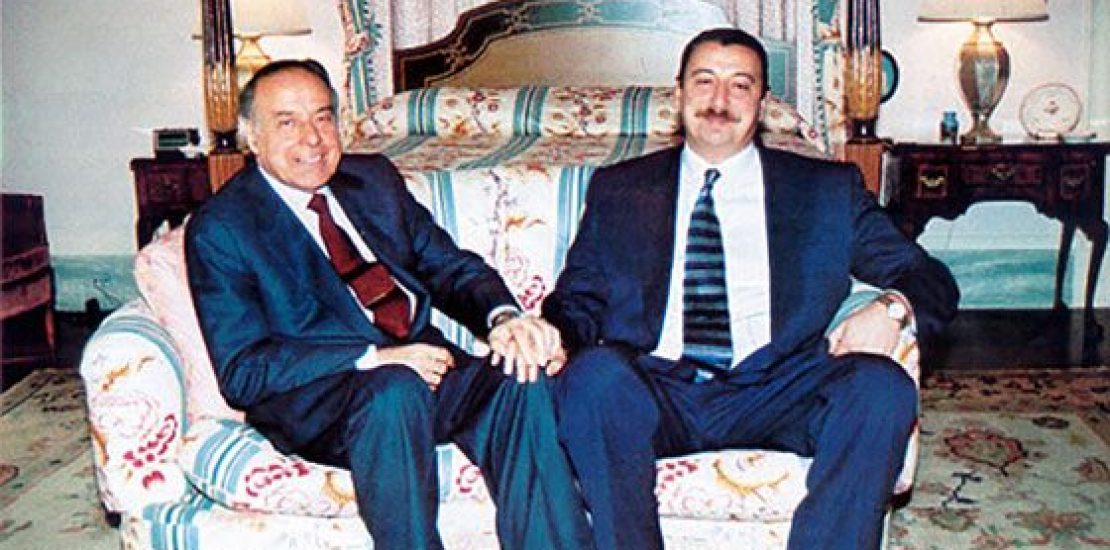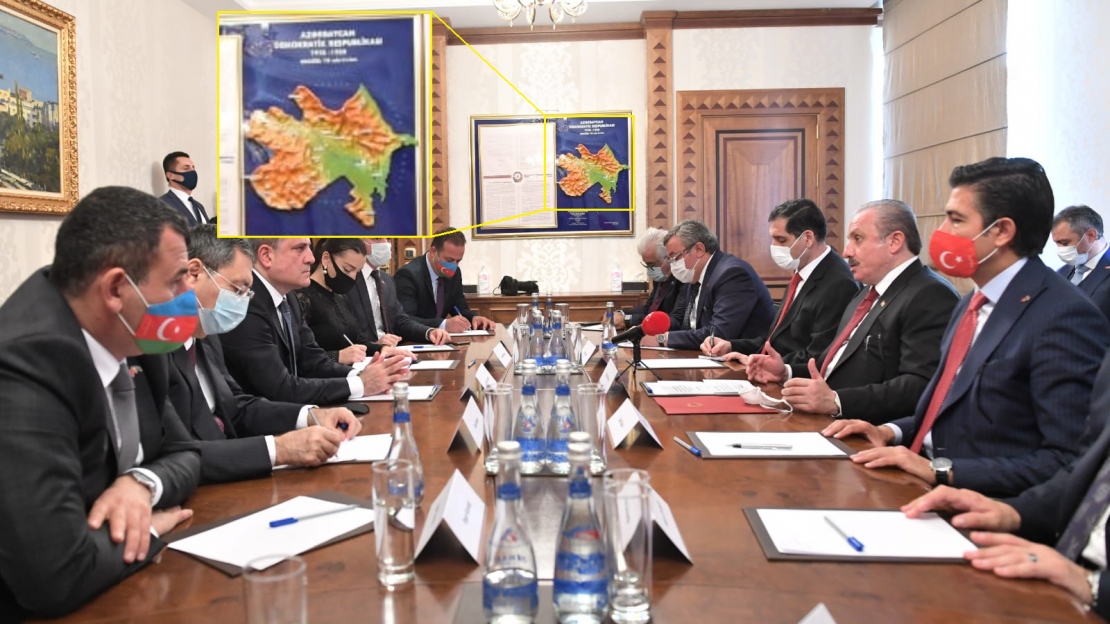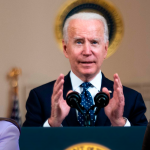- 17 December, 2020
- Foreign Policy

The President of Azerbaijan Ilham Aliyev stated in his speech during the military parade in Baku on December 10 that at least a part of the territory of the Republic of Armenia is the “historical lands” of Azerbaijan.
“In fact, Armenia’s aggressive policy began in the late 1980s. At that time, 100,000 Azeris living in the territory of the present-day Republic of Armenia were expelled from their native lands. “Zangezur, Goycha and Iravan regions are our historical lands,” Aliyev stated. (In Azerbaijani, the toponyms Zangezur, Goycha and Iravan are used for Syunik, Gegharkunik and Yerevan).
However, this is not the first time that Aliyev actually presents territorial claims to the Republic of Armenia. He has made similar statements many times during his presidency.
Aliyev’s previous statements
Aliyev spoke on various platforms in different years about the territory of Armenia being “historical Azerbaijani” lands. Here are some examples of how this expansionist thought has changed in his statements.
At the government session in 2010, Aliyev said: “We cannot allow the creation of a second Armenian state on Azerbaijani lands. The first Armenian state was established in 1918 on the Azerbaijani lands, in the Erivan Khanate and Zangezur region.” Four years later, in 2014, during a visit to a military unit located in the Aghdam region, Aliyev stated: “Erivan Khanate, Zangezur, Goychan are all our historical lands. We, the Azerbaijanis, must return to these lands and we will do it. We must restore our territorial integrity.”
In 2018, during the conference of the ruling “Yeni Azerbaijan” party, Aliyev stated: “I must also mention that we must not forget and we do not forget about our historical lands. This should be a guide for our future activities just as we are working in this direction today. Our historical lands are the Erivan Khanate, Zangezur and Goycha. The younger generation and the whole world must know this… Erivan is our historical land and we, the Azerbaijanis, must return to these historical lands. This is our political and strategic goal, and we must gradually approach it.”
In June of this year, during the opening of the Olympic complex in the city of Tartar, Aliyev stated that Yerevan was “gifted” to Armenia in 1918, something that is “unforgivable and should not be forgotten”. “Our ancient land of Zangezur was also transferred to Armenia. With the transfer of Zangezur, a geographical division of the great Turkic world occurred and the main part of Azerbaijan was deprived of the border with Turkey.”
The responses of the Armenian side
In 2018, the then President of the Republic of Armenia Serzh Sargsyan responded to Aliyev’s statement. The latter commented on it in the context of the settlement of the Artsakh conflict. “The Nagorno-Karabakh conflict can be resolved solely under one condition, if Azerbaijan gives up on its maximalist, unrealistic expectations in terms of the outcome of negotiations. Unless they give up on that, but continue to daydream, to rave about capturing Yerevan or Zangezur, we can have no hope that the problem can be resolved,” said Sargsyan.
Prime Minister Nikol Pashinyan’s press secretary Mane Gorgyan responded to the words about the territory of the Republic of Armenia stated at the military parade in Baku on December 10. She strongly condemned the “provocative statements” made by Aliyev. “The voicing of territorial ambitions towards Armenia seriously questions Azerbaijan’s readiness to establish peace and deliberately endangers regional peace and security,” the PM’s spokesman said.
International response
International organizations and third countries have largely ignored Aliyev’s statements about the territory of the Republic of Armenia being “historic Azerbaijani” land, and the direct or indirect words about returning them.
Only Russia among third countries responded to the statements during the military parade in Baku. Maria Zakharova, spokeswoman for the country’s Foreign Ministry, said in particular that political statements should not undermine the efforts to end hostilities.
Azerbaijani nationalist discourse on the territory of the Republic of Armenia
Within Azerbaijani nationalist circles, the territory of the Republic of Armenia is often referred to as “Western Azerbaijan”. This thesis of nationalist circles also penetrated into the official propaganda of Azerbaijan. Back in 2007, the Ministry of Culture of Azerbaijan published an English book entitled “The Monuments of Western Azerbaijan.” The book presents various historical and archeological monuments in Armenia, such as Garni Cathedral, Etchmiadzin Cathedral, Odzun-Yereruyk churches, as Turkik or Aghvanian, and the presence of Armenians in the territory of Armenia began only in the 15th century according to the book.
It is noteworthy that the preface of the book quotes the words of Ilham Aliyev’s father, Heydar Aliyev, about the territory of the Republic of Armenia, which he said in 1997. “In the last two centuries, due to ethnic cleansing and massacres… Azeris have been systematically expelled from our native lands, where our people have lived for thousands of years.” In this area, which is now called Armenia, there are thousands of Azerbaijani historical and cultural monuments that have been ruined or destroyed.”
Recently, on October 20, during a meeting of the Turkish parliamentary delegation and the Azerbaijani Foreign Minister in Baku, a map of Azerbaijan was posted on the wall, where a large part of the territory of Armenia: Syunik, Vayots Dzor, Tavush are presented as part of Azerbaijan.
 The map, in all probability, shows the Republic of Azerbaijan of 1918-20. Or rather, the map of the territories considered to be its by that republic.
The map, in all probability, shows the Republic of Azerbaijan of 1918-20. Or rather, the map of the territories considered to be its by that republic.
Father and son Heydar and Ilham Aliyevs, who ruled Azerbaijan for decades, presented direct or indirect territorial claims to the Republic of Armenia. In recent years, however, Ilham Aliyev has been openly talking about “returning” to Yerevan and Syunik.
Hovhannes Nazaretyan
“Union of Informed Citizens”




